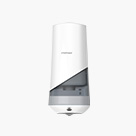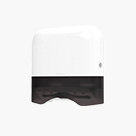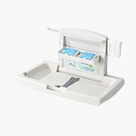The Evolution of Hand Dryers: From Inception to Modern Innovations
Hand dryers are now a cutting-edge piece of equipment found in every lavatory, capable of drying your hands fast and effectively. What a game-changer it has been! For more than a century, several investors have made it their mission to eliminate paper towels by using blowing air in their place.
Trends and innovation are constantly progressing, and this can be seen in all aspects of life. In the case of hand dryers, it begs the question of their origins and how, through bright and modern design, they have transformed the division. In the past few years, hand dryers with high speeds, eco-friendliness, and biodegradable operation have all raised huge popularity.
Evolution
As an example of how far technology has come, consider that the hand dryers were put forth in the 1920s. The slow, manual hand dryers are no longer in production because contemporary goods must meet strict guidelines for noise level, speed, and hygienic standards.
George Clemens invented the first official hand dryer in 1949, but it had to compete with the inefficiency of traditional paper towels, and it eventually lost. The quick and easy paper alternative was too good for big, noisy, slow machines. Many of our clients are interested in energy efficiency, particularly those in the business sector who want to cut costs and carbon footprint.
Updates and enhancements
The first-hand dryers had to be touched, which dispersed bacteria. To solve this issue and remove the need for users to touch any part of the device, automatic hand dryers that functioned on a sensor were developed. A study revealed that the heated air in the lavatory encouraged the growth of bacteria.
Despite its high price, the Dyson Airblade was an innovative and superior automatic hand dryer when it was first released. In just ten seconds, the Airblade can effectively and rapidly dry your hands.
Electronic hand dryer evolution: from robust bases to contemporary features and designs
Although the primary method of operation is still the same, contemporary models have additional features that improve their usefulness. Furthermore, since not all bathroom designs can accommodate the conventional book and cube formats, device design has grown in importance.
Even with their contemporary features, electronic hand dryers still have a lot in common with their predecessors. Warm air is blasted by a sensor-controlled dryer using a mechanism with better hygiene features like HEPA filters that trap airborne bacteria and viruses, quicker drying times, and eco-friendly options.
Future Developments and New Technologies for Hand Dryers
Since their invention in the 1940s, hand dryers have been a trend. Furthermore, the sector of the future seems even more promising.
One of the key developments in hand dryer technology is speed increase. Drying hands is faster and more efficient than ever due to the improvement of high-speed hand dryers that can dry hands in seconds. The development of new technologies that use less power and are best for the environment decreases the carbon footprint of hand dryers.
One fascinating new area of innovation is the sensors and other technologies found in hand dryers. Few modern hand dryers, for instance, use sensors to sense when a hand is beneath the device and activate or deactivate automatically as necessary.



















